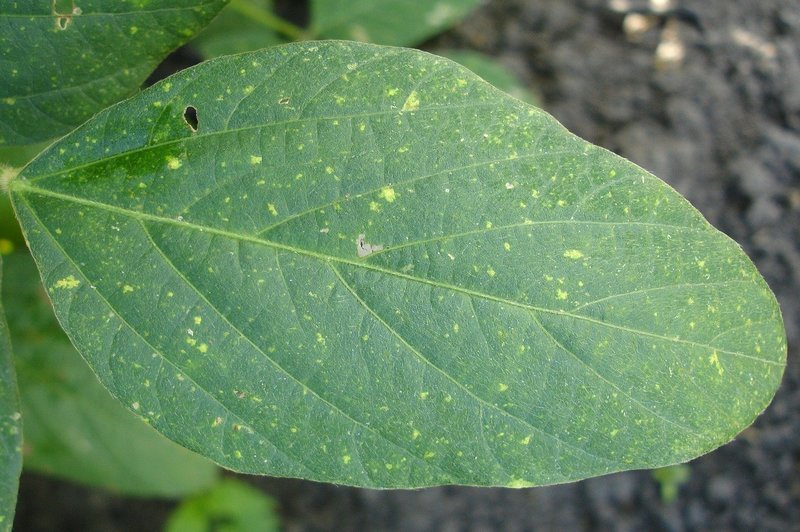The only proven method on how to get rid of downy mildew is by picking off and disposing of the affected leaves or plants. To know why this is the only way, continue to read on.
Before we tackle removing downy mildew in plants, let us first discuss what downy mildew is. Is it the same as powdery mildew?

Unlike powdery mildew, downy mildew is not caused by a fungus. Instead, a parasitic organism that is a close relative of algae is responsible for downy mildew.
Based on the statements above, it can be deduced that fungicides will not eradicate downy mildew. However, some growers still use chemical intervention in cases of severe infestation.
The Organism
The organism that causes downy mildew belongs to either one of the following genus: Peronospora, Plasmopara, Basidiophora, and Bremia. It is a common disease in wet months since more moisture is available in the leaves.
Downy mildew spreads from plant to plant via airborne spores. The plants that are usually affected include:
- Brassicas
- Carrots
- Columbine (Aquilegia)
- Foxgloves
- Geum
- Grapevines
- Hebe
- Busy Lizzie (Impatiens)
- Lettuces
- Onions
- Pansies
- Parsnips
- Peas
- Poppies
- Rhubarbs
- Roses
- Spinach
- Tobacco plants (Nicotiana)
Downy mildew species affect a limited range of plants — i.e. the species that infects brassicas is different from the species attacking pansies. However, downy mildews can produce secondary spore types (known as oospores), more resilient than airborne spores.
How To Know If Your Plants Got Downy Mildew
Another difference between powdery and downy mildew is that the latter has harder-to-spot symptoms. These signs include:
- Pale green, yellow, purple, or brown blotches – The color is dependent on the plant affected and can be found on the upper leaf surfaces. In some plants like lettuces, the blotches may have straight edges if leaf veins surround them.
- White, grey, or purple mold-like growth – The growth is on the underside of the leaves and corresponds to the blotches on the other side. The color is dependent on the species of the downy mildew.
- Shriveling of the leaves – This symptom is a common sight for severely affected plants, along with discoloration. The leaves may turn brown like tobacco plants or yellow like in Impatiens or rose.
Aside from wilting the leaves, severely affected plants may also be stunted and deprived of vigor. The leaves may fall prematurely, and the plant may die, such as columbine, tobacco, and Impatiens.
These symptoms are hard to see in some plants (e.g. foxgloves and roses) even with a hand lens but are easy to detect with the naked eye in others (e.g. peas and pansies). Sometimes, other plant parts can be affected, such as Impatiens flower buds, pea pods, and cauliflower curds.
Controlling downy mildew
As mentioned in the introduction, the organism responsible for downy mildew is not affected by fungicide. Therefore, the only way to limit the damage is by pruning the affected leaves or removing severely affected plants completely.
The discarded leaves and plants must be disposed of properly to prevent otherwise healthy plants’ cross-contamination. The disposal methods include deep burial, consignment with green waste processors, or burning.
Other than these methods, there are few options available for the average gardener once downy mildew affects your plants. There are, however, several tips you must remember to prevent it from happening in the first place.
How to avoid downy mildew
- Practice weeding and proper spacing in planting plants to allow adequate air circulation.
- In glasshouses, veer away from overhead watering if possible and open the vents and windows for proper air movement. These measures prevent prolonged wetness of the leaves and lower down humidity.
- Water your foliage early in the morning, so the moisture dries up immediately. Watering at night increases humidity and exposes the plants to prolonged wetness.
- Practice crop rotation for veggies and avoid replanting the same plant in areas where there has been an infection. These practices are meant to avert soil-borne spores.
Remember the oospores? These resting spores can survive up to five years in the soil from a rotting contaminated plant and can re-infect via systemic infection (growing throughout the plant, not via plant to plant).
If you are serious about growing plants or are a business owner, you may want to know how to keep plants in greenhouse from growing mold. Many references are available, and this article about where to buy CLR mold and mildew remover is beneficial.
Are there plants that are resistant to downy mildew?
There are cultivars of lettuce, onions, and Impatiens resistant to downy mildew. However, there are times that downy mildew mutates to evade these cultivars’ resistance.
Examples of downy mildew mutating to avoid resistance are in the cases of lettuce and spinach.
Conclusion
While there is no chemical intervention available to the ordinary gardener to treat downy mildew, there are physical ways to limit the damage. Also, some tips were laid out in this article to help avoid downy mildew.
Some wait for summer to arrive since downy mildew needs moisture and low temperature. One just needs to follow the tips above during the wet months because, as always, prevention is better than cure.
